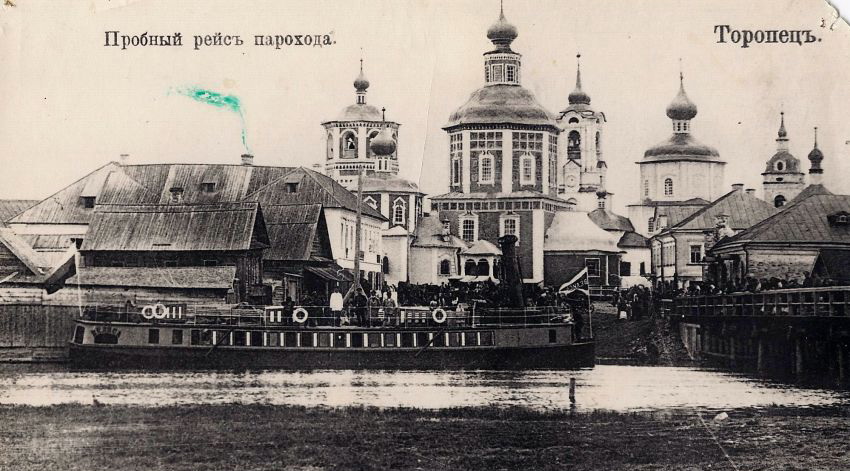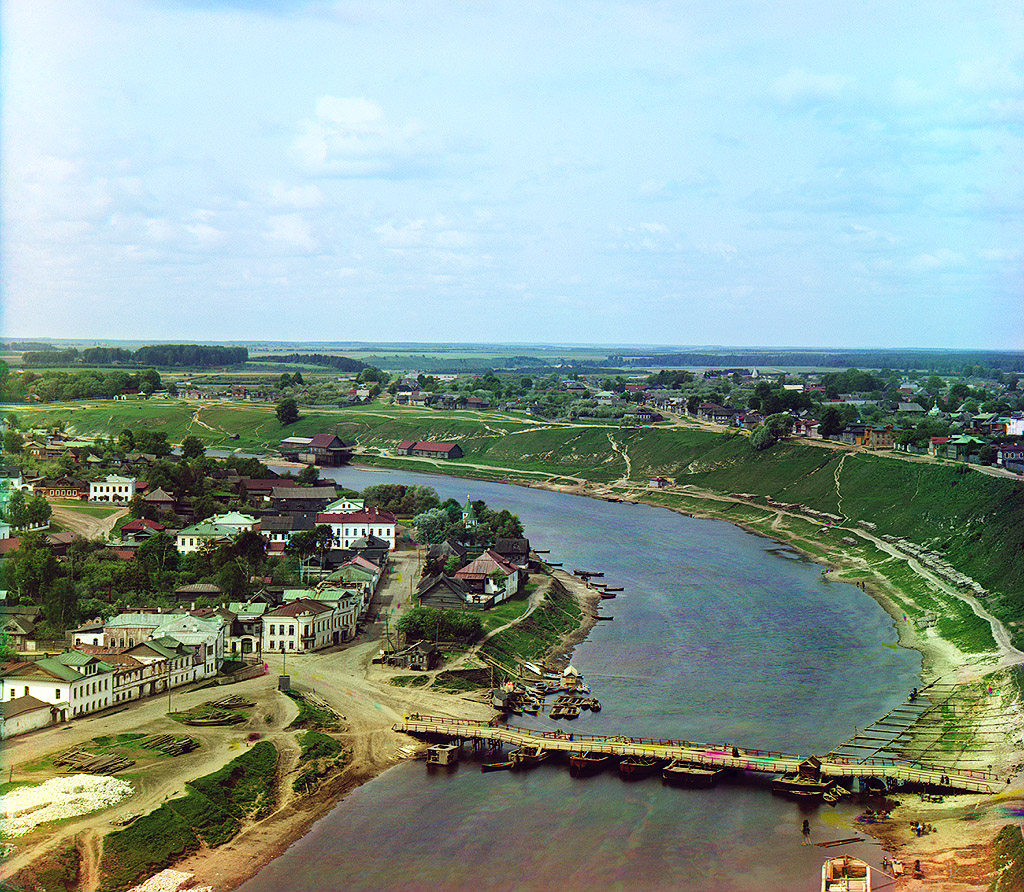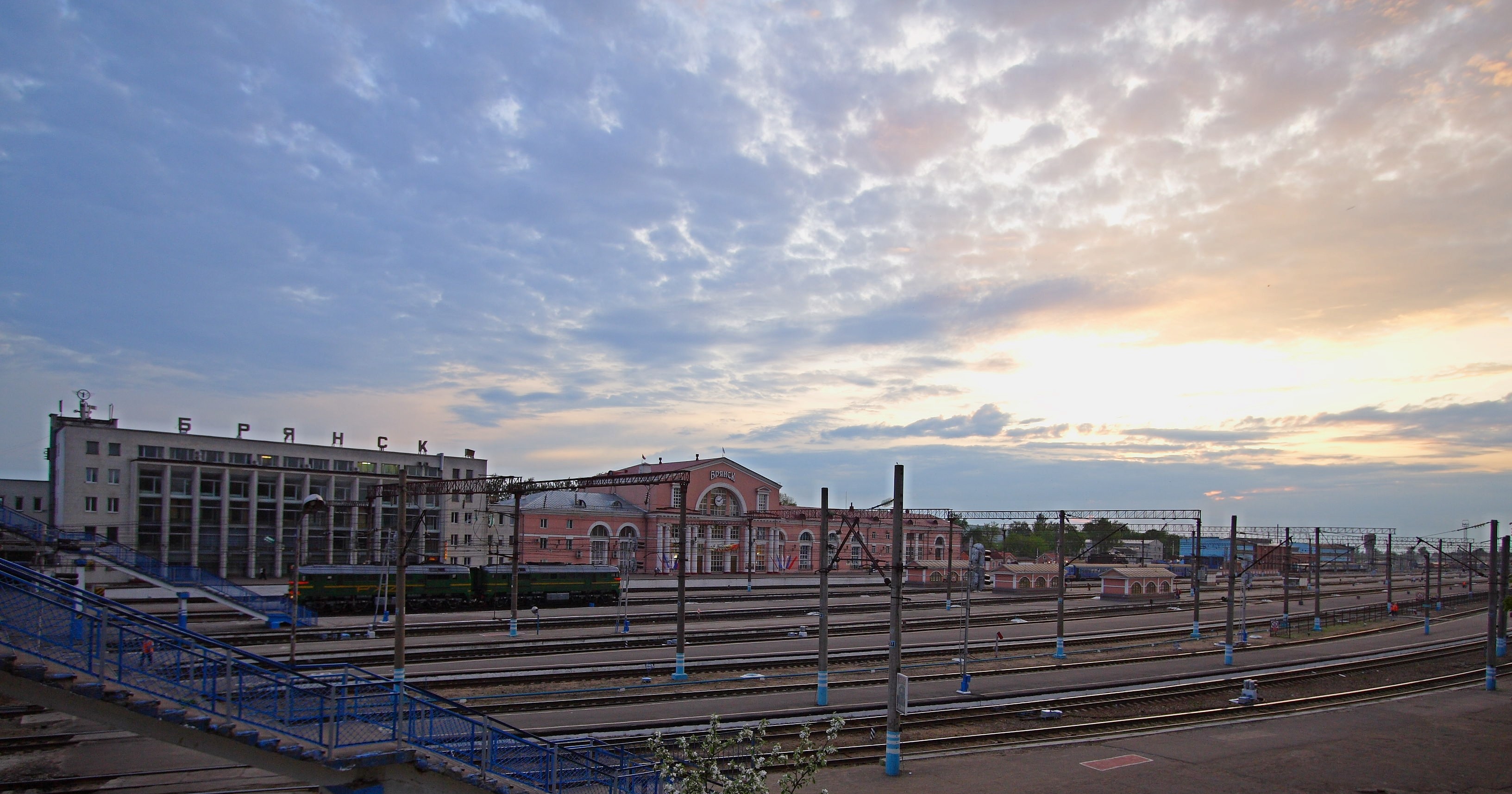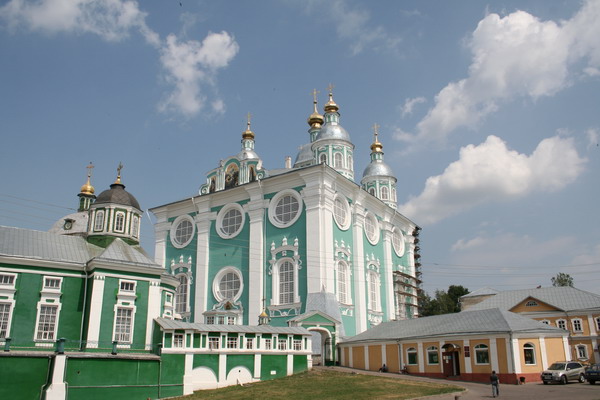|
Principality Of Smolensk
The Principality of Smolensk (eventually Grand Principality of Smolensk) was a Kievan Rus' lordship from the 11th to the 16th century. Until 1127, when it passed to Rostislav Mstislavich, the principality was part of the land of Kiev. The principality gradually came under Lithuanian influence and was incorporated into the Grand Duchy of Lithuania in 1404. The principality was reorganized into the Smolensk Voivodeship in 1508. The Grand Duchy of Moscow controlled the city from 1514 to 1611, then it was recaptured by the Polish–Lithuanian Commonwealth. Tsardom of Russia recaptured the city in 1654. History Descendants of Grand Prince Iaroslav I of Kiev (died 1054) ruled the principality until 1125. Following the death of Vladimir Monomakh, Grand Prince of Kievan Rus', Vladimir's son Mstislav I Vladimirovich became the Rus' over-king and Mstislav's own son Rostislav Mstislavich became Prince of Smolensk (ruled 1125–1160). The principality gained its own Orthodox bishopric under ... [...More Info...] [...Related Items...] OR: [Wikipedia] [Google] [Baidu] |
Vassal State
A vassal state is any state that has a mutual obligation to a superior state or empire, in a status similar to that of a vassal in the feudal system in medieval Europe. Vassal states were common among the empires of the Near East, dating back to the era of the Egyptian, Hittite and Mitanni conflict, as well as ancient China. The use of vassal states continued through the Middle Ages, with the last empire to use such states being the Ottoman Empire. The relationships between vassal rulers and empires was dependent on the policies and agreements of each empire. While payment of tribute and military service is common amongst vassal states, the degree of independence and benefits given to vassal states varied. Today, more common terms are puppet state, protectorate, client state, associated state or satellite state. Historical examples Ancient Egypt The reign of Thutmose III (1479 BC-1425 BC) laid the foundations for the systems that functioned during the Amarna period of Egypt ... [...More Info...] [...Related Items...] OR: [Wikipedia] [Google] [Baidu] |
Iaroslav I Of Kiev
Yaroslav the Wise or Yaroslav I Vladimirovich; russian: Ярослав Мудрый, ; uk, Ярослав Мудрий; non, Jarizleifr Valdamarsson; la, Iaroslaus Sapiens () was the Grand Prince of Kiev from 1019 until his death. He was also the Prince of Novgorod on three occasions, uniting the principalities for a time. Yaroslav's baptismal name was George ( orv, Гюрьгi, ) after Saint George. Rise to the throne The early years of Yaroslav's life are mostly unknown. He was one of the numerous sons of Vladimir the Great, presumably his second by Rogneda of Polotsk, although his actual age (as stated in the ''Primary Chronicle'' and corroborated by the examination of his skeleton in the 1930s) would place him among the youngest children of Vladimir. It has been suggested that he was a child begotten out of wedlock after Vladimir's divorce from Rogneda and marriage to Anna Porphyrogenita, or even that he was a child of Anna Porphyrogenita herself. French historian Je ... [...More Info...] [...Related Items...] OR: [Wikipedia] [Google] [Baidu] |
Princes Of Smolensk
The Prince of Smolensk was the ''kniaz'', the ruler or sub-ruler, of the Rus' Principality of Smolensk, a lordship based on the city of Smolensk. It passed between different groups of descendants of Grand Prince Iaroslav I of Kiev until 1125, when following the death of Vladimir Monomakh the latter's grandson Rostislav Mstislavich was installed in the principality, while the latter's father Mstislav I Vladimirovich became Grand Prince. It gained its own bishopric in 1136. It was Rostislav's descendants, the Rostaslavichi, who ruled the principality until the fifteenth-century. Smolensk enjoyed stronger western ties than most Rus' principalities. Grand Duchy of Kiev (Princes of Smolensk) * 1010–1015 Stanislav Vladimirovich Yaroslavichi * 1054–1057 Viacheslav I Yaroslavich * 1057–1060 Igor I Yaroslavich * 1060–1073 Sviatoslav I Yaroslavich * 1073–1077 Vladimir I Monomakh * 1077–1085 Vladimir II Vsevolodich Monomakhovichi/Sviatoslavichi * 1092-1093 Mstislav I * 1093� ... [...More Info...] [...Related Items...] OR: [Wikipedia] [Google] [Baidu] |
Toropets
Toropets (russian: Торо́пец) is a town and the administrative center of Toropetsky District in Tver Oblast, Russia, located where the Toropa River enters Lake Solomennoye. Population: History In 1074, when the town was first mentioned in chronicles, Toropets belonged to the Princes of Smolensk. By 1167, it was large enough to have its own princes. The most famous of its rulers was Mstislav the Bold, whose grandson Alexander Nevsky wed Alexandra of Polotsk in Toropets in 1239. In the mid-14th century the town passed to the Grand Duchy of Lithuania, which had to surrender it to Ivan III following the Battle of Vedrosha in 1503. In the early 17th century, Toropets was ransacked by the Polish army. In the course of the administrative reform carried out in 1708 by Peter the Great, Toropets was included into Ingermanland Governorate (known since 1710 as Saint Petersburg Governorate). In 1727, separate Novgorod Governorate was split off. Toropets was included into Ve ... [...More Info...] [...Related Items...] OR: [Wikipedia] [Google] [Baidu] |
Mstsislaw
Mstislaw or Mstislavl ( be, Мсціслаў, [], russian: Мстиславль [msʲtʲɪˈslavlʲ], pl, Mścisław, lt, Mstislavlis) is a town in the Mogilev Region, Eastern Belarus. It serves as the administrative center of Mstsislaw District. As of 2009, its population was 10,804. History Mstislavl was first mentioned in the Ipatiev Chronicle in 1156. It was initially a part of the Principality of Smolensk, but had become the capital of the Principality of Mstislavl by 1180. In the Middle Ages, it was the family seat of Princes Mstislavsky. Pyotr Mstislavets is believed to have been born in Mstislavl. In 1377, it was conquered by the Grand Duchy of Lithuania. The first Lithuanian duke of Mstislavl was Karigaila, brother of Jogaila. The town remained part of the Polish–Lithuanian Commonwealth under the Mścisław Voivodship until the Partitions of Poland in 1772. Buildings of historic interest include the Carmelite church (1637, renovated 1746–50) and the Jesuit cat ... [...More Info...] [...Related Items...] OR: [Wikipedia] [Google] [Baidu] |
Bely, Tver Oblast
Bely (russian: Бе́лый) is a town and the administrative center of Belsky District in Tver Oblast, Russia, located on the Obsha River. Population: 6,900 (1897). History The name of the town means "white" in Russian, although it is unknown how or why this name originated. The fortress of Bely is first mentioned in a chronicle in 1350, since it was conquered by the Grand Duchy of Lithuania. It was located on the border between Lithuanian and Russian lands, and intermittently changed affiliation between Lithuania (later Poland) and the Grand Duchy of Moscow. In the 15th century, it became the seat of the Belsky branch of the ruling House of Gediminas. The town was overrun by the Grand Duchy of Moscow in 1503. Three years later, Muscovites built a formidable castle, which the Lithuanians laid a siege to in 1508. The town was again subordinated to the Polish–Lithuanian Commonwealth between 1618 and 1654, after which it finally went under Moscow. In the course of the admin ... [...More Info...] [...Related Items...] OR: [Wikipedia] [Google] [Baidu] |
Rzhev
Rzhev ( rus, Ржев, p=ˈrʐɛf) is a types of inhabited localities in Russia, town in Tver Oblast, Russia, located southwest of Staritsa (town), Tver Oblast, Staritsa and from Tver, on the highway and railway connecting Moscow and Riga. It is the uppermost town situated on the Volga River. Population: History Rzhev was founded in the Middle Ages and rivals Toropets as the oldest town in the region. Rzhevians usually point out that their town is mentioned in the Novgorod Republic, Novgorod laws as early as 1019. Their neighbors from Toropets, on the other hand, give more credence to Rzhev's first mention in a major chronicle under 1216, when it was in possession of Mstislav the Bold, Prince of Toropets. Whatever the truth may be, it is clear that medieval Rzhev was bitterly contested by three regional powers—the Novgorod Republic, the Principality of Smolensk, and the Grand Principality of Vladimir-Suzdal. Following the Mongol invasion of Russia, Mongol invasion, Rzhev pa ... [...More Info...] [...Related Items...] OR: [Wikipedia] [Google] [Baidu] |
Algirdas
Algirdas ( be, Альгерд, Alhierd, uk, Ольгерд, Ольґерд, Olherd, Olgerd, pl, Olgierd; – May 1377) was the Grand Duke of Lithuania. He ruled the Lithuanians and Ruthenians from 1345 to 1377. With the help of his brother Kęstutis (who defended the western border of the Duchy) he created an empire stretching from the present Baltic states to the Black Sea and to within of Moscow. Background Algirdas was one of the seven sons of Grand Duke Gediminas. Before his death in 1341, Gediminas divided his domain, leaving his youngest son Jaunutis in possession of the capital, Vilnius. With the aid of his brother, Kęstutis, Algirdas drove out the incompetent Jaunutis and declared himself Grand Duke in 1345. He devoted the next thirty-two years to the development and expansion of the Grand Duchy of Lithuania. After becoming the ruler of Lithuania, Algirdas was titled the King of Lithuania ( la, rex Letwinorum) in the Livonian Chronicles instead of the Ruthe ... [...More Info...] [...Related Items...] OR: [Wikipedia] [Google] [Baidu] |
Mozhaysk
MozhayskAlternative transliterations include ''Mozhaisk'', ''Mozhajsk'', ''Mozhaĭsk'', and ''Možajsk''. ( rus, Можа́йск, p=mɐˈʐajsk) is a town and the administrative center of Mozhaysky District in Moscow Oblast, Russia, located to the west of Moscow, on the historic road leading to Smolensk and then to Poland. Population: History First mentioned in 1231 as an appanage of Chernigov; A theory says Mozhaysk took its name from the Mozhay (Mozhaya) River, whose name could be of Baltic origin (compare Lithuanian ''mažoji'' "small" - in contrast to the larger Moskva River nearby). Later Mozhaysk became an important stronghold of the Smolensk dynasty, in the 13th century ruled by Duke (later Saint) Theodore the Black. Muscovites seized Mozhaysk in 1303, but in the course of the following century had serious troubles defending it against Algirdas (Grand Duke of Lithuania from 1345 to 1377). A younger brother of the ruling Grand Duke of Moscow usually held the Principality o ... [...More Info...] [...Related Items...] OR: [Wikipedia] [Google] [Baidu] |
Vyazma
Vyazma (russian: Вя́зьма) is a town and the administrative center of Vyazemsky District in Smolensk Oblast, Russia, located on the Vyazma River, about halfway between Smolensk, the administrative center of the oblast, and Mozhaysk. Throughout its turbulent history, it defended western approaches to Moscow. Population: 44,000 (1970). Medieval history and monuments Vyazma was first mentioned in a chronicle under the year of 1230, although it is believed to be much older than that. The town was named after the river, whose name was from Russian word "" (''vyaz), meaning "bog" or "swamp".Е. М. Поспелов. "Географические названия мира". Москва, 1998, стр. 108. At the time, the town belonged to a lateral branch of the Rurik dynasty, Rurikid House of Smolensk, and carried on a lively trade with Narva on the Gulf of Finland. In 1403, the local princes were expelled by Lithuanians to Moscow, where they took the name of Princes Vy ... [...More Info...] [...Related Items...] OR: [Wikipedia] [Google] [Baidu] |
Bryansk
Bryansk ( rus, Брянск, p=brʲansk) is a city and the administrative center of Bryansk Oblast, Russia, situated on the River Desna, southwest of Moscow. Population: Geography Urban layout The location of the settlement was originally associated with navigable river-routes and was located in the area of the Chashin Kurgan, where the fortress walls were erected. For reasons that have not yet been clarified, the city changed its location and by the middle of the 12th century had established itself on the steep slopes of the right bank of the Desna on Pokrovskaya Hill (russian: Покровская гора). The foundations of the future urban development of the city were laid even earlier, when around the city-fortress in the 17th century after the Time of Troubles of 1598-1613 on the coastal strip at the foot of the Bryansk fortress the posadskaya "Zatinnaya Sloboda" was upset, and on the upper plateau, between Verkhniy Sudok and White Kolodez - the "Streletskaya Sloboda". ... [...More Info...] [...Related Items...] OR: [Wikipedia] [Google] [Baidu] |
Russian Orthodox Diocese Of Smolensk
The Diocese Smolensk (russian: Смоленская епархия) is an eparchy of the Russian Orthodox Church with its center in Smolensk. The city cathedral is the Cathedral of the Assumption of the Blessed Virgin Mary. Eparchies of the Russian Orthodox Church {{EasternOrthodoxy-stub ... [...More Info...] [...Related Items...] OR: [Wikipedia] [Google] [Baidu] |
.png)

.jpg)





